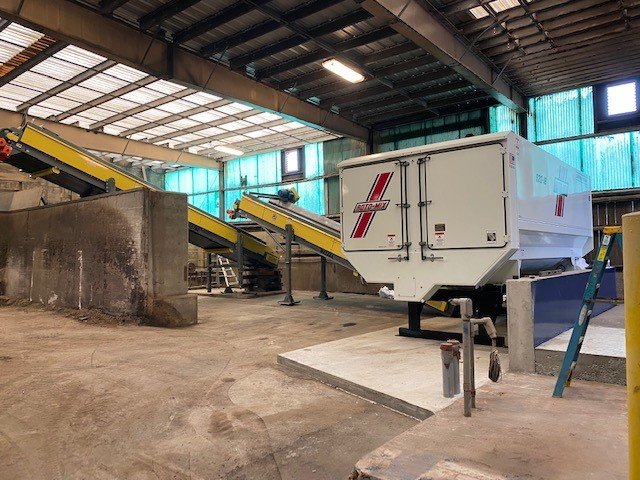Where has all the composting gone? Concern over per- and polyflouroalkyl substances (PFAS) isn’t the only reason for the decline in biosolids composting in the Northeast. There are also incentives to use anaerobic digestion at Water Resource Recovery Facilities (WRRFs) and a crowded compost market, among other pressures. But these deterrents aren’t universal, and composting is still the choice of many water resource recovery facilities around the Northeast.
Biosolids composting isn’t growing the way it once was and there have certainly been some facility closures. But according to Charlie Alix, who is a professional engineer with Stantec, a NEBRA board member, and an expert in biosolids composting, facilities that already practice composting tend to keep it up. That’s certainly the case for the Hawk Ridge Compost Facility in Unity, Maine. Casella Organics, which operates Hawk Ridge, can’t sell or even use biosolids compost in Maine because of the 2022 state law there banning the use of biosolids-based soil amendments. But Casella continues to receive biosolids at Hawk Ridge from Maine and other New England states, which the company processes at the facility and sells outside the state. The two primary markets are landscaping and soil blenders (topsoil manufacturers), according to Jeff McBurnie, an environmental manager at Casella Resource Solutions. “We still have strong sales in our region,” McBurnie said. “We continue to do this because we believe it is one of the most appropriate, responsible, and sustainable ways to manage wastewater treatment plant solids,” he said.
Alix of Stantec said biosolids composting can be a very good solution for small communities with WRRFs that treat fewer than 10 million gallons per day (mgd). In addition to the excellent product, Alix pointed out that the practice is relatively simple and can often be managed by one staff person. In addition, the end product is easy to store. He noted that the financial incentives to produce and sell biogas from anaerobic digestion come into play for facilities that treat more than 10 mgd.
Another challenge of biosolids composting, Alix said, is that the practice is somewhat energy intensive. Most biosolids composting methods involve running fans to boost aerobic biochemical processes, as well as capturing and treating air for odors. In addition, for facilities looking to start composting biosolids, siting can be a challenge. To counter the challenges of composting biosolids on site, many small WRRFs have their sludge taken by the private sector, sometimes to be composted and sometimes managed in other ways.
One perennial challenge of biosolids composting is that it yields a consumer product. As Alix succinctly said, “If you make it, someone’s got to take it.” Whereas there is a significant demand right now for renewable energy sources such as biogas and the associated credits, that’s not the case for compost. “There’s an overabundance of compost in the marketplace,” said Alix, noting the availability of compost from yard waste and food scraps. Dan Goosen, the president of the Composting Association of Vermont, is a veteran manager of those other kinds of composts; he currently manages the compost operation for the Chittenden Solid Waste District. Goosen said the district has looked into the possibility of accepting biosolids but has found it not feasible for a variety of reasons, including land availability, the need for dedicated equipment, and concern over PFAS and other constituents that he said are less common in yard waste and food scraps than biosolids.
Of all the challenges with biosolids composting, concern over PFAS is the elephant in the room. In the Northeast, the most striking consequences are in Maine, where several facilities smaller than Hawk Ridge that were composting biosolids are no longer doing so because of the statewide ban on land application of biosolids. In addition, McBurnie of Casella noted that while Hawk Ridge is still accepting biosolids from WRRFs in Maine, it sends most Maine materials to a landfill for disposal after processing. “Having to transport the compost further from the point of production increases the cost of operations, not to mention the negative impacts it has on greenhouse gas emissions due to the longer hauling distances,” he said. Fortunately, composting is one of the best biosolids solutions in terms of CO2 emissions and CO2 reduction, as NEBRA’s Biosolids Emissions Assessment Model shows (see www.BiosolidsGHGs.org).
Hopefully, more widespread coverage of PFAS will bring a fuller public awareness of where PFAS in biosolids fit relative to the myriad potential PFAS exposures in our daily lives.



